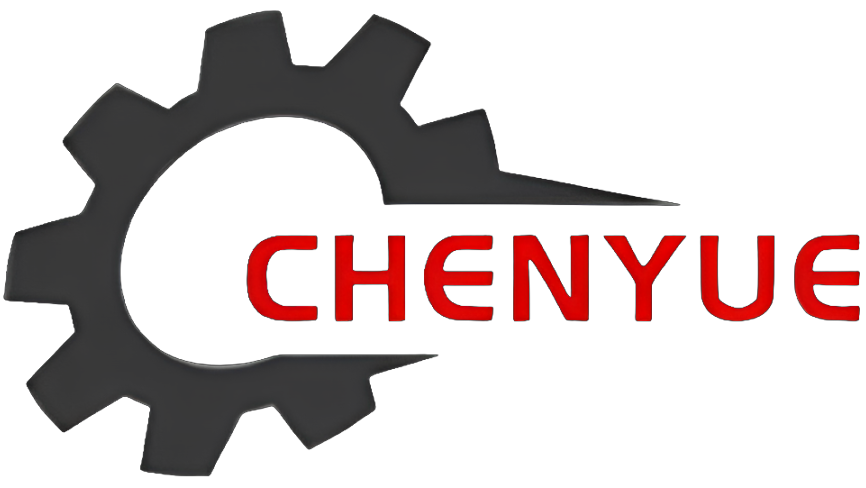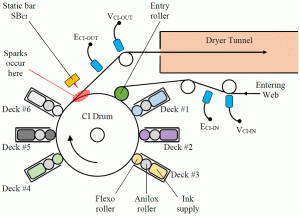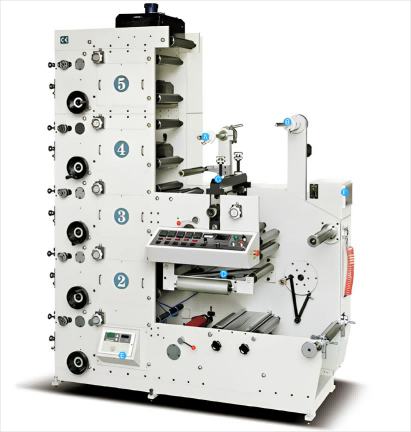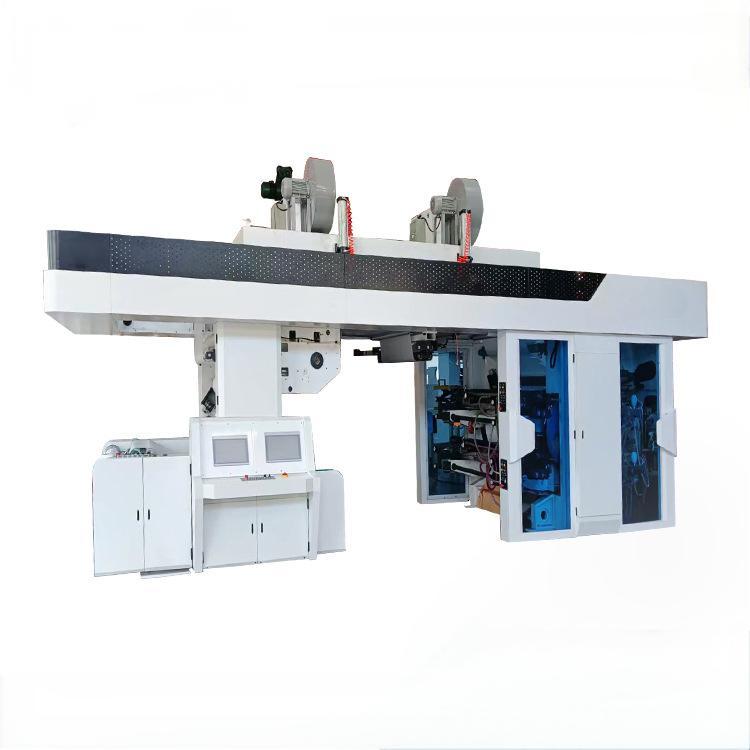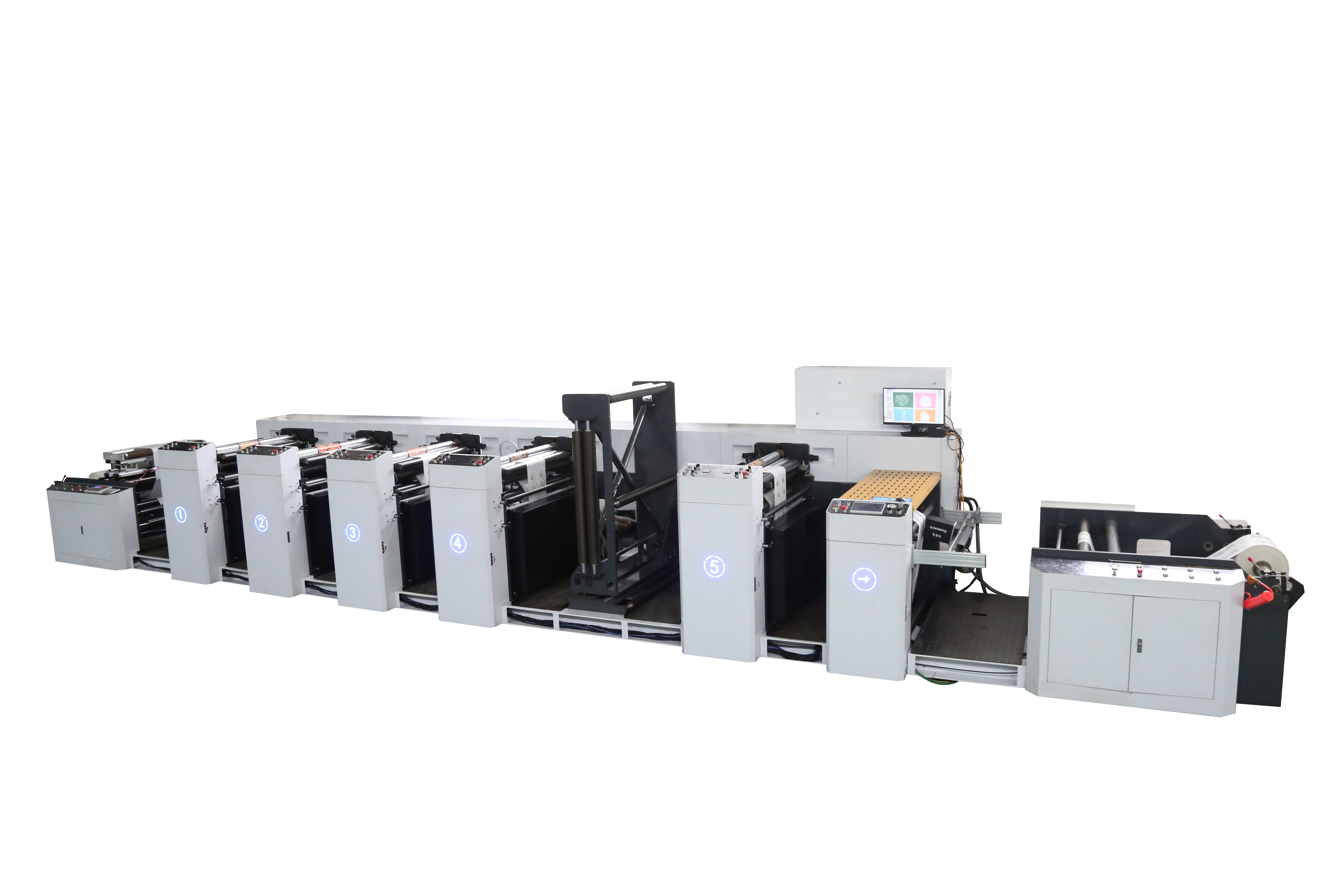Among the three types of flexographic printing presses, CI printing presses are the most important. All printing units revolve around a central impression drum, and the material is tightly wrapped on the central impression drum with stable tension. It mainly includes the unwinding and traction part, printing part, drying part (intercooler drying and final drying), cooling part, rewinding part, main transmission and control part.
1.Unwind part.
In the unwinding part, it is usually equipped with an air shaft clamping material (shaftless unwinding can be selected when the substrate is heavy). An automatic tension control system is used to ensure the tension of the substrate during high-speed printing, and a web guide system Ensure that the orientation of the substrate does not deviate. The traction mechanism is used to drive the substrate forward and control the printing speed.
2. Printing part
The most important structure of the satellite printing press is the printing part. As shown in the figure, all printing units surround the central impression drum. The impression drum adopts a double-wall structure, which is beneficial to the temperature control of the impression cylinder. The surface of the impression roller has a nickel-plated protective layer and is equipped with a water circulation system. To keep the outer surface temperature of the impression cylinder constant and prevent the impression cylinder from thermal expansion. Each printing unit is composed of an automatic ink circulation system, a scraper, a ceramic anilox roller, and a plate roller. Generally, electric pressure registration device and hydraulic mechanical auxiliary pressure adjustment are used. generally equipped with a real-time printing quality monitoring system that can monitor printing quality defects in real time. Based on this unique structure, the printing accuracy of the machine is high, which can generally reach 300 meters per minute.
3. Dry part
Each set of printing units is equipped with a set of independent drying devices. After printing is completed, the substrate is dried in the centralized drying unit at the top. For some substrates whose temperature rises and causes deformation during high-speed printing, a water-cooling roller can be installed to water-cool after printing and drying to prevent the substrate from deforming. Natural gas drying, hot oil drying or UV drying can be selected according to customer needs.
4. Rewind part
After drying is completed, the material can be rolled up and is also equipped with a tension control system to ensure stable material tension. Some high-end CI flexo printing machines are also equipped with non-stop ick roll changing devices, corona treatment devices, fire alarms and automatic fire extinguishing devices to achieve higher printing efficiency and safer production.
5.Transmission and control part.
CI flexo printing machines mainly have two transmission methods, namely gear transmission or gearless transmission (servo transmission). Gear transmission means that each group of printing units is driven by the large gear of the central impression drum. The central impression drum rotates, each printing unit also rotates. gearless transmission means that each set of printing units is directly driven by a servo motor. Compared with gear transmission, a CI flexo printing machine driven by a servo motor is more stable, has higher color registration accuracy and higher printing quality, but the price is higher than Gear-driven CI flexo printing machine. Nowadays, most of the satellite flexographic printing machines directly use PLC to control the whole machine, which is easy to maintain, stable and convenient for maintenance.
